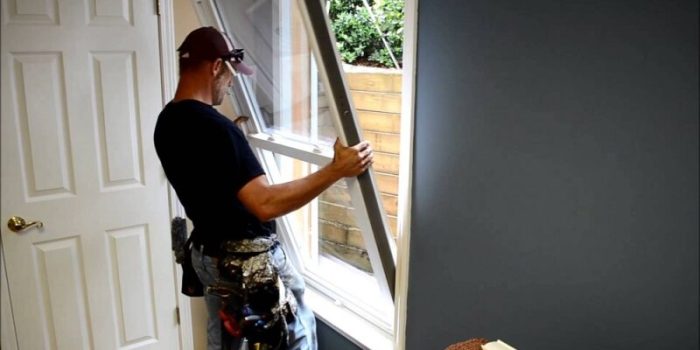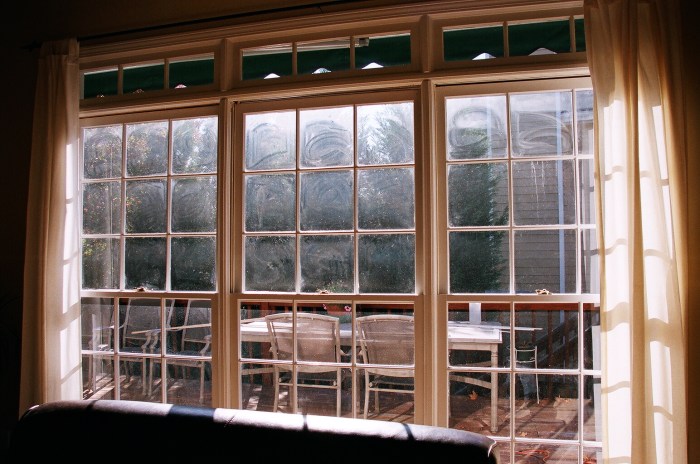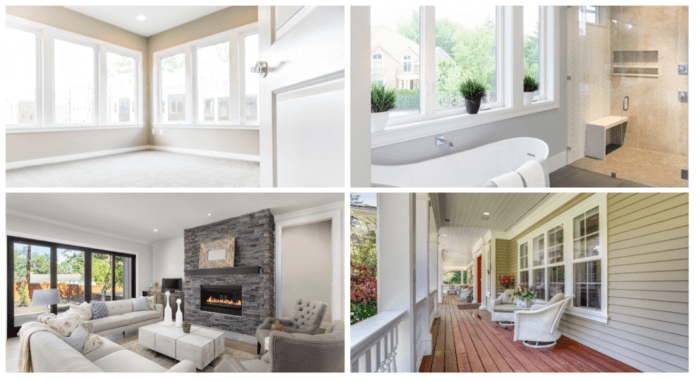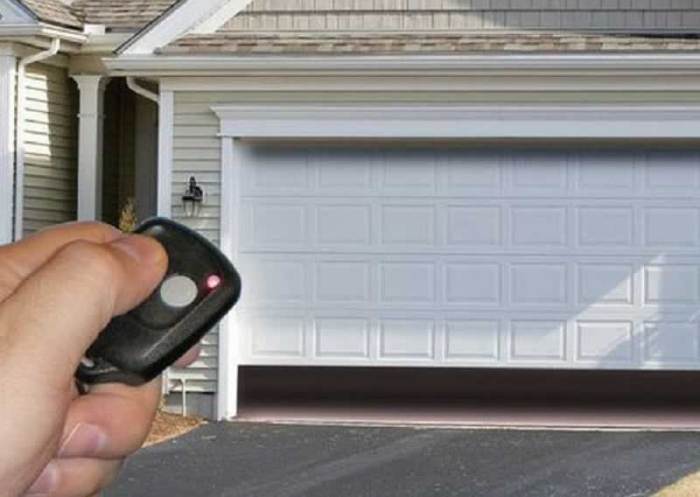Window and Door Renovation A Comprehensive Guide
Window and door renovation is a multifaceted undertaking that can significantly enhance a home’s appeal and value. From improving energy efficiency to updating aesthetics, this comprehensive guide explores the various aspects of this transformative project. We’ll delve into different renovation types, materials, and installation methods, while also examining crucial factors like planning, cost analysis, and safety considerations.
This guide will cover the full spectrum of window and door renovation, from initial planning to final maintenance. We’ll discuss choosing the right materials, understanding installation procedures, and achieving maximum energy efficiency. A thorough examination of cost estimations, safety precautions, and permits will also be addressed.
Introduction to Window and Door Renovation
Window and door renovation is a significant home improvement project that can significantly enhance a property’s value, energy efficiency, and overall aesthetic appeal. Motivations for such renovations often include improving curb appeal, increasing energy savings, and updating the home’s interior and exterior design to better match current preferences. The process involves careful planning, selection of materials, and adherence to local building codes.
This renovation encompasses a wide range of possibilities, from simple repairs to complete replacements or upgrades. Understanding the different types of renovations, materials, and their respective advantages and disadvantages will empower homeowners to make informed decisions.
Types of Window and Door Renovations
Window and door renovations encompass various approaches, each tailored to specific needs and budgets. Replacement involves substituting existing windows or doors with entirely new ones, while repair focuses on rectifying existing issues like damaged frames or warped panels. Upgrading often involves enhancing existing structures by adding new features or improving energy efficiency. Replacement projects generally offer the most significant improvements in terms of performance and aesthetics, but repair or upgrading options provide more cost-effective solutions.
Materials Commonly Used
Several materials are commonly employed in window and door renovation projects, each offering unique properties. Wood, vinyl, and fiberglass are prominent choices, with varying characteristics influencing their suitability for different applications.
Material Comparison
| Material | Pros | Cons |
|---|---|---|
| Wood | Excellent aesthetic appeal, customizable options, natural beauty, can be easily refinished. | Susceptible to rot, insect damage, and weathering over time, requires regular maintenance and refinishing, higher cost compared to vinyl. |
| Vinyl | Low maintenance, durable, resistant to rot and insects, energy efficient, affordable compared to wood. | Can appear less aesthetically appealing compared to wood, may not have the same level of customization, can be prone to warping in extreme temperatures. |
| Fiberglass | Durable, resistant to rot, insects, and weathering, energy efficient, low maintenance, excellent structural integrity. | Slightly higher cost compared to vinyl, may not have the same level of aesthetic customization as wood, less common and therefore might have fewer options in terms of styles. |
Planning and Design
A well-planned window and door renovation project is crucial for achieving a successful outcome. Careful consideration of design elements, accurate measurements, and a realistic budget are vital for a smooth and cost-effective process. This section will delve into the steps involved in planning such a renovation, along with essential design factors.
Thorough planning lays the foundation for a successful window and door renovation. This involves meticulous consideration of various aspects, from the initial design concept to the final installation. It ensures that the project aligns with the homeowner’s needs and expectations, resulting in a functional and aesthetically pleasing outcome.
Steps in Planning a Window and Door Renovation
Careful planning is essential for a successful window and door renovation. The process typically involves several key steps, each contributing to a well-executed project. These steps should be followed in order for a cohesive and efficient approach.
- Needs Assessment: Determining the specific requirements for the renovation is the initial step. This includes identifying the desired aesthetic, functional improvements, and energy efficiency goals. Homeowners should consider the current condition of their windows and doors, existing architectural style, and potential future needs.
- Budgeting: Creating a realistic budget is paramount. This includes estimating material costs, labor expenses, permits (if required), and potential unforeseen expenses. Detailed cost breakdowns are beneficial for effective financial management.
- Design Selection: Selecting the appropriate window and door styles and materials based on the budget and aesthetic preferences is critical. Consulting with professionals and researching different options can lead to informed decisions.
- Professional Consultation: Seeking advice from contractors or architects is recommended. They can provide insights on feasibility, code compliance, and optimal solutions. This can lead to cost savings and efficient project execution.
- Accurate Measurements: Precise measurements of existing windows and doors are critical for accurate ordering and installation. Incorrect measurements can lead to costly adjustments and installation issues.
- Permitting (if required): Checking local building codes and obtaining necessary permits is a critical step to ensure compliance. Failure to obtain required permits can lead to delays and project complications.
Factors to Consider When Designing Window and Door Replacements
Several key factors should be considered during the design phase to ensure that the new windows and doors meet the homeowner’s needs.
- Energy Efficiency: Selecting energy-efficient windows and doors is vital for reducing heating and cooling costs. Double-paned or triple-paned glass, along with high-performance frames, are crucial components. Consideration of the local climate is important when making these choices.
- Aesthetics: The design should harmonize with the existing home’s architectural style and aesthetic preferences. The style and color of the new windows and doors should complement the overall look and feel of the house.
- Budget: A realistic budget is essential for staying within financial constraints. Understanding the cost differences between various materials and styles is important for making informed choices.
Importance of Accurate Window and Door Measurements
Precise measurements are fundamental for a successful window and door replacement. Incorrect measurements can lead to installation issues, wasted materials, and increased costs.
Accurate measurements are crucial for ensuring a proper fit and preventing potential problems during installation. This includes not only the dimensions of the openings but also the necessary allowances for expansion and contraction.
Common Window and Door Styles and Their Aesthetic Qualities
Understanding the aesthetic qualities of various window and door styles can aid in making informed design choices.
| Style | Description | Aesthetic |
|---|---|---|
| Casement | Opens outward on hinges | Classic, often associated with traditional homes; allows for maximum light and ventilation. |
| Double-hung | Two sashes that slide vertically | Versatile, suitable for various architectural styles; offers a traditional look. |
| Sliding | Sashes slide horizontally | Ideal for maximizing views and natural light; works well in modern or contemporary homes. |
Cost Analysis and Budgeting
Accurately estimating costs is crucial for a successful window and door renovation project. A detailed budget prevents surprises and allows for informed decision-making throughout the process. Understanding the factors influencing costs, from material choices to labor rates, is paramount to creating a realistic financial plan.
Accurate cost estimations are essential to ensure the project aligns with the homeowner’s financial goals. Careful planning and budgeting help avoid unexpected expenses and potential overruns, ultimately leading to a more satisfying renovation experience.
Estimating Renovation Costs
A comprehensive cost analysis considers various factors influencing the total project expense. Understanding these factors helps homeowners create realistic budgets and make informed choices about materials and labor. Material costs, labor rates, and project complexity all play a significant role in the final cost.
Factors Affecting Overall Costs
Several key factors impact the total cost of a window and door renovation. Material selection is a major driver. High-quality, energy-efficient materials like impact-resistant glass or thermally broken frames increase the upfront cost but can yield long-term savings through energy efficiency and durability. Labor costs vary significantly based on the complexity of the project. For example, a simple window replacement requires less labor than a full-scale door and window overhaul. The complexity of the project, including the number of windows and doors to be replaced, the extent of any associated structural work, and any custom design elements, can significantly influence the overall cost. The geographic location of the project also plays a role, as labor and material costs can vary considerably depending on local market conditions.
Typical Expenses Breakdown
A typical window and door renovation project involves several key expense categories. These include material costs (windows, doors, frames, hardware), labor costs (installation, removal, disposal), permits and inspections (if required), and any additional costs associated with specialized work, like custom designs or structural modifications. Professional consultation with contractors can help homeowners identify and understand these expenses.
Cost Range for Window and Door Replacement Options
This table provides a general estimated cost range for various window and door replacement options. These are averages and actual costs may vary based on the factors previously discussed. It is crucial to obtain quotes from multiple contractors to get a better understanding of the cost in your specific area.
| Window/Door Type | Estimated Cost Range |
|---|---|
| Single-pane vinyl window replacement | $200-$500 per window |
| Double-pane vinyl window replacement | $300-$800 per window |
| Energy-efficient double-pane window replacement | $400-$1200 per window |
| Composite clad wood window replacement | $500-$1500 per window |
| Full-size exterior door replacement (standard style) | $800-$2500 |
| Full-size exterior door replacement (custom design) | $1500-$5000+ |
Materials and Installation

Source: diatomreno.com
Selecting the right materials and ensuring proper installation are crucial for the long-term success of your window and door renovation project. Careful consideration of durability, maintenance needs, and aesthetic appeal will contribute to a satisfying outcome. This section delves into the material selection process and various installation techniques.
Material Selection
Choosing the appropriate materials for your windows and doors involves a multifaceted approach. Durability is paramount; consider the climate in your region and the anticipated load. Maintenance requirements should also be factored in, as some materials demand more upkeep than others. Finally, aesthetics play a key role in achieving the desired look and feel of your home. High-quality materials often come with a higher initial cost, but the increased longevity and reduced future maintenance can lead to significant long-term savings. For example, composite materials, while more expensive upfront, often require less maintenance and are more resistant to weathering compared to wood.
Installation Methods
Different window and door types necessitate varied installation techniques. Proper installation ensures structural integrity, energy efficiency, and the long-term performance of your windows and doors. Careful consideration of the specific type of window or door, such as single-hung, double-hung, or sliding, is critical. This ensures the installation method aligns with the design and function of the opening. For example, a casement window might require specialized hardware and a different approach compared to a picture window.
Potential Installation Issues and Solutions
Several potential issues can arise during window and door installation. Proper planning and preparation can minimize these problems. Incorrect measurements or improper framing can lead to issues like misalignment or gaps. Solutions involve precise measuring and careful framing to ensure accurate placement. Another potential issue is improper sealing, which can compromise energy efficiency and lead to drafts. This can be addressed by using high-quality sealant and ensuring proper application techniques. Furthermore, inadequate support structures can cause structural problems. Addressing these concerns involves proper structural support calculations and appropriate installation practices.
Installation Procedures
Careful planning and adherence to established installation procedures are essential for a successful renovation. This ensures the final product meets the desired standards for both aesthetics and performance. A variety of procedures exist, tailored to the specific window or door type.
| Window Type | Installation Procedure |
|---|---|
| Single-Hung | Involves a single movable sash and a fixed sash. Installation focuses on proper alignment of the sashes, ensuring smooth operation and weather tightness. |
| Double-Hung | Features two movable sashes that slide vertically. Careful attention to counterbalance mechanisms and track alignment is essential for proper operation. |
| Casement | Operates by hinges, typically on one side, allowing it to open outward. Ensuring the hinges are properly aligned and secure is crucial. |
| Sliding | Operates on tracks that allow the sash to slide horizontally. Precise track alignment and lubrication are critical for smooth movement. |
Energy Efficiency and Sustainability
Window and door renovations offer a significant opportunity to enhance energy efficiency and sustainability in a home. By improving insulation and sealing, these upgrades can substantially reduce energy consumption, lower utility bills, and contribute to a more environmentally responsible lifestyle. This is particularly important in today’s climate of rising energy costs and growing environmental awareness.
Contribution to Energy Efficiency
Window and door renovations directly impact a home’s energy efficiency by reducing heat transfer. Improved insulation reduces the amount of heat lost in winter and gained in summer, thus lowering the need for heating and cooling. This, in turn, directly translates to reduced energy consumption and lower utility bills. Properly sealed windows and doors minimize air infiltration, further enhancing energy efficiency. For example, a well-insulated and sealed window can save up to 25% on heating and cooling costs compared to an older, less efficient model.
Importance of Energy-Efficient Materials
The choice of materials plays a critical role in achieving optimal energy efficiency. High-performance materials, such as double- or triple-pane insulated glass units (IGUs), offer superior thermal resistance. Low-emissivity (low-e) coatings on glass further reduce heat transfer. Consideration of materials like thermally broken frames, which prevent heat transfer through the frame itself, significantly enhances the overall energy efficiency of the renovation. Using materials with high R-values is crucial for improved insulation.
Maximizing Energy Savings
Proper installation and sealing are essential for maximizing energy savings. Carefully fitted windows and doors, with airtight seals around the perimeter, minimize air leaks. High-quality installation techniques ensure that the window and door units are correctly aligned and sealed, preventing air infiltration and maximizing energy efficiency. Furthermore, regular maintenance and inspection, including checking for any cracks or gaps in seals, can prevent degradation of energy-saving properties over time.
Comparison of Energy-Efficient Window and Door Options
Various options exist for energy-efficient windows and doors. Double-pane windows are a standard choice, offering improved insulation over single-pane windows. Triple-pane windows provide even greater thermal resistance. Consideration of low-e coatings can significantly reduce heat transfer. Thermally broken frames provide additional insulation. When selecting doors, consider the material and type of weatherstripping. Fiberglass doors, for example, are often highly energy-efficient. Comparing the specific energy ratings of different products is critical to selecting the most suitable option for a particular climate and budget. For example, in colder climates, triple-pane windows with thermally broken frames are often the preferred choice for optimal energy savings. An analysis of specific models and their energy ratings, in conjunction with local climate conditions, can help to determine the best choice for each scenario.
Maintenance and Care
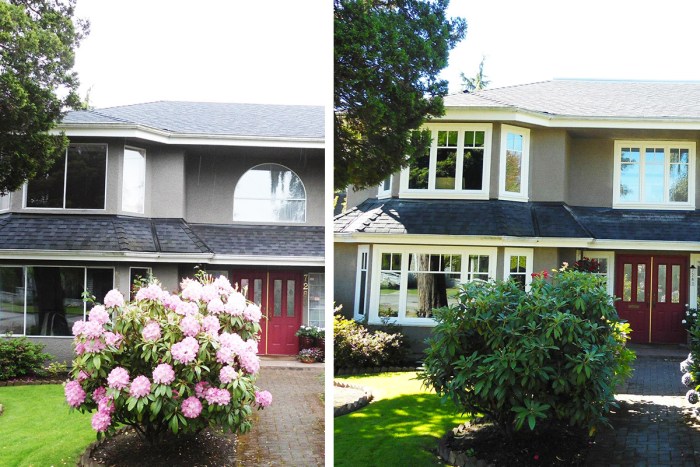
Source: westcoastwindows.ca
Proper maintenance is crucial for extending the lifespan and preserving the aesthetic appeal of your window and door replacements. Neglecting routine care can lead to premature wear, damage, and costly repairs down the line. A proactive approach to maintenance ensures your investment remains in excellent condition for years to come.
Maintaining window and door replacements involves a combination of regular inspections, targeted cleaning, and appropriate repairs. Understanding the specific material properties of your windows and doors allows you to tailor your maintenance schedule to their particular needs.
Wood Window and Door Maintenance
Wood windows and doors require consistent care to prevent rot, warping, and insect infestation. Maintaining their structural integrity and appearance requires ongoing attention.
- Regular Cleaning: Clean wood surfaces with a mild soap solution and a soft cloth. Avoid harsh chemicals or abrasive materials that could damage the finish. Thoroughly dry the surfaces to prevent water stains and potential warping. Periodically apply a wood sealant or varnish to protect the wood from moisture and UV exposure.
- Pest Control: Inspect wood regularly for signs of insect infestation. If any damage is observed, contact a pest control professional immediately for treatment.
- Repairs: Address any cracks, gaps, or loose components promptly. Replace damaged or deteriorated components to maintain the structural integrity of the frame.
- Seasonal Protection: In harsh climates, protect your wooden windows and doors from extreme weather conditions. During winter, ensure proper ventilation to prevent moisture buildup. In the summer, shield them from intense sunlight.
Vinyl Window and Door Maintenance
Vinyl windows and doors are relatively low-maintenance compared to wood, but regular care still ensures longevity. Their durability comes from proper cleaning and protection.
- Regular Cleaning: Clean vinyl surfaces with mild soap and water. Use a soft cloth to avoid scratching the surface. Remove any mildew or dirt buildup with a solution of water and white vinegar. Avoid using harsh chemicals that may damage the protective coating.
- Preventative Measures: Inspect for any damage to the seals, handles, or other components. Address any issues promptly to prevent further problems.
- Addressing Damage: Repair or replace any damaged components as soon as possible to prevent the spread of the damage.
- Seasonal Protection: During harsh weather, ensure proper sealing to prevent water damage and protect against extreme temperatures.
Aluminum Window and Door Maintenance
Aluminum windows and doors are known for their durability and low maintenance requirements. Maintaining their appearance and function requires routine attention.
- Regular Cleaning: Clean aluminum surfaces with a mild soap and water solution. Use a soft cloth or a soft-bristled brush to avoid scratching the surface. Remove any stubborn dirt or grime with a mild cleaner.
- Preventative Maintenance: Inspect the seals and hardware for any signs of wear and tear. Lubricate moving parts as needed to maintain smooth operation. Apply a protective coating to prevent corrosion, especially in coastal or humid areas.
- Addressing Issues: Address any signs of corrosion, loose screws, or damaged seals promptly.
- Seasonal Protection: In areas with extreme temperatures, consider insulating the windows to prevent damage.
Safety and Permits
Renovating windows and doors involves potential hazards, making safety paramount. Proper planning and adherence to regulations are crucial to ensure a safe working environment and prevent costly mistakes or legal issues. This section Artikels essential safety precautions and permit requirements.
Ensuring the safety of workers and the general public during window and door renovations is paramount. Following established safety guidelines and obtaining necessary permits is critical for both legal compliance and minimizing risks. This section details these vital steps.
Safety Precautions
Careful planning and execution are essential to minimize risks during window and door renovation projects. Following safety protocols prevents accidents and injuries. These protocols should encompass protective gear, proper handling of materials, and awareness of potential hazards.
- Personal Protective Equipment (PPE): Workers must wear appropriate safety gear, including eye protection, hard hats, gloves, and hearing protection. This safeguards them from flying debris, dust, and noise, preventing injuries and long-term health issues.
- Material Handling: Heavy materials like glass and lumber require careful handling to avoid accidents. Using proper lifting techniques and equipment is crucial to prevent injuries.
- Working at Heights: When working at heights, fall protection measures such as harnesses, safety nets, and scaffolding are mandatory. These measures significantly reduce the risk of falls.
- Electrical Safety: Working near electrical wiring requires caution. De-energizing circuits and using insulated tools are critical to prevent electrical shocks. Checking electrical connections before beginning work is vital.
- Weather Considerations: Consider weather conditions, especially in inclement weather. Adjust work schedules or postpone tasks to ensure worker safety and avoid potential risks.
Permit Requirements and Inspections
Obtaining necessary permits and undergoing inspections is crucial for legal compliance and ensuring the project adheres to building codes. Failure to comply can lead to project delays, fines, and legal issues.
- Local Regulations: Consult local building codes and regulations specific to the area. These regulations dictate the specific requirements for window and door installation, including material specifications and installation methods.
- Permit Applications: Complete the necessary permit application forms accurately and thoroughly. This includes providing accurate project details, materials used, and contact information.
- Inspection Schedules: Attend all scheduled inspections by the relevant authorities. Inspectors will verify that the work meets code requirements and standards.
- Code Compliance: Ensure the project adheres to all local building codes and regulations related to window and door installations. Consulting with a qualified professional can help ensure full compliance.
Local Building Codes and Regulations, Window and door renovation
Building codes and regulations vary by location, so it is vital to understand the specific requirements in your area. These regulations detail acceptable installation practices, material standards, and safety protocols.
| Code Category | Description |
|---|---|
| Structural Codes | These codes govern the structural integrity of the building, including the support required for new windows and doors. |
| Energy Codes | These codes dictate the energy efficiency standards for new windows and doors, which could include insulation requirements and window ratings. |
| Accessibility Codes | These codes ensure that new windows and doors comply with accessibility standards, especially if the project involves a multi-family or public building. |
| Fire Codes | These codes dictate the fire resistance requirements for materials and installation methods, potentially impacting the choice of frames and glass. |
Importance of Adherence to Guidelines
Following safety guidelines and adhering to regulations is critical to ensure a successful and safe renovation project. It also safeguards the project from legal issues and potential penalties. Compliance with regulations demonstrates respect for the community and commitment to building standards.
Adherence to safety guidelines and regulations minimizes risks, ensures project completion within acceptable parameters, and avoids legal complications.
Case Studies and Examples: Window And Door Renovation
Real-world window and door renovation projects offer valuable insights into the process, demonstrating successful implementations and highlighting potential pitfalls. Analyzing these case studies allows for a practical understanding of design approaches, material choices, and the ultimate impact on energy efficiency and aesthetics. Lessons learned from past projects inform future endeavors, enabling homeowners and contractors to make well-informed decisions.
Case studies provide a concrete illustration of how various design considerations and material choices affect the final outcome. By examining successful projects, the challenges faced, and the innovative solutions adopted, we can draw valuable conclusions about the overall window and door renovation process.
Residential Renovation Project A: Enhancing Energy Efficiency
This project involved replacing aging, single-pane windows with energy-efficient, double-pane windows in a suburban home. The existing windows exhibited significant energy loss, leading to high heating and cooling costs. The homeowners prioritized energy efficiency, opting for high-performance windows with low-e coatings. This decision resulted in a substantial reduction in energy consumption, leading to demonstrable cost savings. Detailed energy audits before and after the renovation showcased a significant decrease in energy usage, validating the choice of energy-efficient materials.
Commercial Renovation Project B: Modernizing Aesthetics
This project focused on revitalizing the storefront of a small retail business. The existing windows and doors were outdated and did not reflect the modern aesthetic of the business’s brand. The renovation incorporated contemporary, sleek designs, featuring large, expansive glass windows that allowed ample natural light into the store. The new doors were chosen for their durability and aesthetic appeal, enhancing the store’s overall image and attracting more customers. This project exemplifies how a strategic window and door renovation can significantly impact a business’s image and customer experience.
Case Study Comparison Table
| Case Study | Project Details | Results |
|---|---|---|
| Residential Renovation Project A | Replacement of aging single-pane windows with energy-efficient double-pane windows in a suburban home. Prioritized energy efficiency and used high-performance windows with low-e coatings. | Significant reduction in energy consumption, demonstrable cost savings, and improved comfort levels. Detailed energy audits confirmed the effectiveness of the renovation. |
| Commercial Renovation Project B | Revitalization of a small retail business’s storefront, replacing outdated windows and doors with contemporary designs. Emphasized modern aesthetics with large glass windows and durable, attractive doors. | Enhanced the store’s image and appeal, increased customer traffic, and improved the overall customer experience. |
Closing Summary
In conclusion, window and door renovation presents a substantial opportunity to improve a home’s functionality, aesthetics, and value. By carefully considering the various factors discussed in this guide, from material selection to cost analysis and safety procedures, homeowners can make informed decisions and achieve a successful renovation. Remember, a well-planned and executed project can yield long-term benefits for your home and lifestyle.
